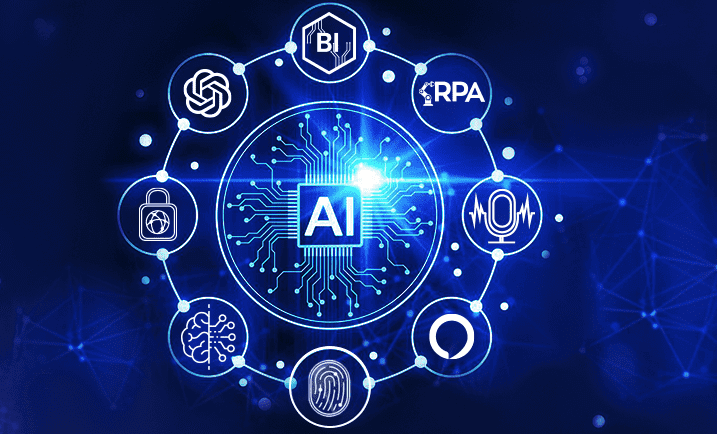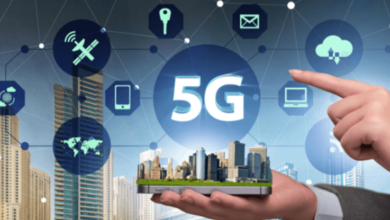Generative AI: Transforming Industries and Unlocking New Potential

Generative AI, a subset of artificial intelligence, is at the forefront of the next wave of technological innovation, transforming industries and unlocking unprecedented potential. By creating new content—whether it’s text, images, video, or even music—Generative AI pushes the boundaries of what machines can achieve. Its ability to generate realistic, complex outputs opens up a world of possibilities across multiple sectors, from healthcare and finance to art and entertainment. In this article, we’ll delve into how Generative AI works, its applications in various industries, the challenges it faces, and its future potential.
Understanding Generative AI
Generative AI refers to machine learning models capable of producing new data or content similar to the data on which they were trained. Unlike traditional AI models that follow specific rules to perform tasks, generative models can create outputs based on learned patterns. These models use algorithms such as Generative Adversarial Networks (GANs) and Variational Autoencoders (VAEs) to create novel outputs.
A GAN, for instance, works by pitting two networks against each other—a generator that creates new data and a discriminator that evaluates its authenticity. Through this process, the generator improves its ability to create convincing outputs, while the discriminator becomes better at detecting what is real or fake. VAEs, on the other hand, work by compressing data into a smaller, more manageable form and then decoding it to recreate or generate new versions.
This technology represents a major advancement in AI’s ability to go beyond recognition and classification, enabling machines to create, design, and innovate in ways that previously only humans could.
Applications of Generative AI in Healthcare
Generative AI has begun revolutionizing healthcare in ways unimaginable just a few years ago. In drug discovery, AI models can generate novel molecular compounds that have the potential to become new medications. For instance, companies are using AI to sift through large datasets of molecular structures to predict which combinations might produce the best therapeutic results. This dramatically reduces the time and cost of drug development, potentially saving lives by getting new treatments to market faster.
In medical imaging, generative models can enhance the clarity of scans, making it easier to detect diseases like cancer in their early stages. AI-powered imaging tools can generate high-resolution scans from low-quality inputs, improving diagnostic accuracy and potentially reducing the need for invasive procedures.
Additionally, generative AI can assist in personalized medicine by generating treatment plans tailored to an individual’s unique genetic makeup and medical history. These AI-generated solutions could lead to better outcomes and fewer side effects for patients, paving the way for a more efficient and patient-centered healthcare system.
Impact of Generative AI on Finance
The finance industry is also benefiting from the power of generative AI. One major application is in fraud detection, where AI models generate realistic but fraudulent transactions, helping companies identify new patterns of fraud that they may not have previously detected. By training models on these generated datasets, financial institutions can bolster their defenses against increasingly sophisticated attacks.
Generative AI is also being used in algorithmic trading, where it can predict market movements and generate investment strategies. These AI systems analyze vast amounts of data, including market trends, historical data, and even news articles, to generate actionable insights. By automating this process, financial firms can make more informed decisions and execute trades at lightning speed, often outperforming human traders.
Moreover, generative AI can be applied to create synthetic financial data for stress testing models. This allows banks to better understand how their systems will react in various market scenarios without relying on actual past data, offering a more comprehensive approach to risk management.
Enhancing Creativity in Art and Entertainment
One of the most exciting areas where generative AI is making an impact is in the creative arts. Artists, musicians, and filmmakers are now working with AI to push creative boundaries. AI-generated art has become a phenomenon, with some pieces even selling for millions at auction. These works, created by GANs or similar models, blend human imagination with AI’s capacity for novel, unexpected patterns.
In music, AI is being used to compose original songs and generate new sounds. Artists can collaborate with AI to produce unique compositions that challenge traditional genres. Some AI systems have even been used to finish incomplete works of classical composers, giving audiences a chance to hear pieces that would have otherwise remained unfinished.
The film industry is also exploring generative AI for special effects, scriptwriting, and even entire movie generation. AI can generate realistic digital characters or environments, reducing the time and cost of post-production. Furthermore, by analyzing successful film scripts and audience preferences, AI models can generate storylines that resonate with viewers, helping filmmakers create content with a higher chance of success.
Transforming Manufacturing and Design
Generative AI is also reshaping the manufacturing and design sectors. In product design, AI is being used to generate multiple design variations based on specific parameters, such as material constraints, performance requirements, or aesthetic goals. This allows designers to explore a wider range of possibilities in a shorter amount of time.
In architecture, generative design tools enable the creation of complex, organic structures that would be difficult or impossible to achieve with traditional methods. AI-generated designs can optimize for factors like energy efficiency, natural light, or structural integrity, leading to more sustainable and innovative buildings.
In manufacturing, generative AI is improving production processes by optimizing workflows and predicting potential bottlenecks or equipment failures before they happen. AI-generated simulations allow manufacturers to test various configurations and conditions without risking downtime or incurring additional costs.
Generative AI in Education
The education sector is also starting to feel the influence of generative AI. In personalized learning, AI tools generate customized lesson plans that cater to each student’s learning style and pace. By analyzing a student’s strengths and weaknesses, generative AI can create exercises and content tailored specifically to help them succeed, making education more inclusive and effective.
Additionally, AI can generate realistic scenarios for simulations, giving students hands-on experience in fields such as medicine, engineering, or even emergency response. These AI-generated simulations can provide a safe environment for learning complex tasks, allowing students to make mistakes and learn from them without real-world consequences.
Furthermore, generative AI can assist in content creation, such as generating quizzes, assignments, and even entire textbooks based on a teacher’s guidelines. This automation frees up educators to focus more on teaching and mentoring students, rather than spending hours creating materials.
Challenges Facing Generative AI
Despite its incredible potential, generative AI also faces significant challenges. One of the most pressing issues is the potential for misuse. For instance, GANs can be used to generate deepfake videos or synthetic media that are almost indistinguishable from real footage, raising concerns about misinformation, privacy violations, and cybersecurity threats.
Ethical considerations also arise when AI-generated content blurs the line between human creativity and machine output. Should AI-generated art or music be considered intellectual property? If so, who owns the rights—the creator of the algorithm or the individual who trained it? These questions highlight the legal and philosophical dilemmas that accompany the rise of generative AI.
Moreover, generative models require vast amounts of data to function effectively, which can exacerbate concerns over data privacy and security. The ability of AI to generate highly realistic content based on personal data raises questions about how this information is collected, used, and protected.
Finally, the energy consumption of training large generative models is another hurdle. Developing these models requires immense computational resources, which contributes to the carbon footprint of the tech industry. As AI continues to evolve, addressing the environmental impact of these systems will become increasingly important.
The Future of Generative AI
The future of generative AI is bright, with endless possibilities for innovation and disruption across industries. In healthcare, we can expect AI to generate even more precise drug compounds and personalized treatment plans, potentially extending human lifespans. In entertainment, AI-generated content could become the norm, with entire movies, video games, or virtual worlds being crafted by AI.
We will also likely see advances in AI’s ability to generate human-like interactions, such as creating more sophisticated virtual assistants or chatbots that can carry on natural, meaningful conversations. As AI continues to improve its generative capabilities, these systems could revolutionize customer service, education, and even personal relationships.
In manufacturing, AI-driven automation and generative design tools could lead to the development of smarter, more efficient factories, reducing waste and energy consumption. Meanwhile, in the financial sector, generative AI models will likely become even more adept at predicting market trends and identifying new opportunities for growth.
Generative AI is also expected to play a key role in solving some of the world’s most pressing problems, from climate change to global food security. By generating new solutions to complex challenges, AI has the potential to unlock new paths toward sustainability and human advancement.
Conclusion
Generative AI is a powerful force that is transforming industries and unlocking new potential across the board. From healthcare and finance to art, entertainment, and beyond, the applications of this technology are vast and varied. However, as with any powerful tool, it must be used responsibly to ensure that its benefits outweigh its risks. As generative AI continues to evolve, it will undoubtedly shape the future in ways we can only begin to imagine today.



